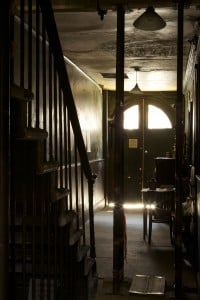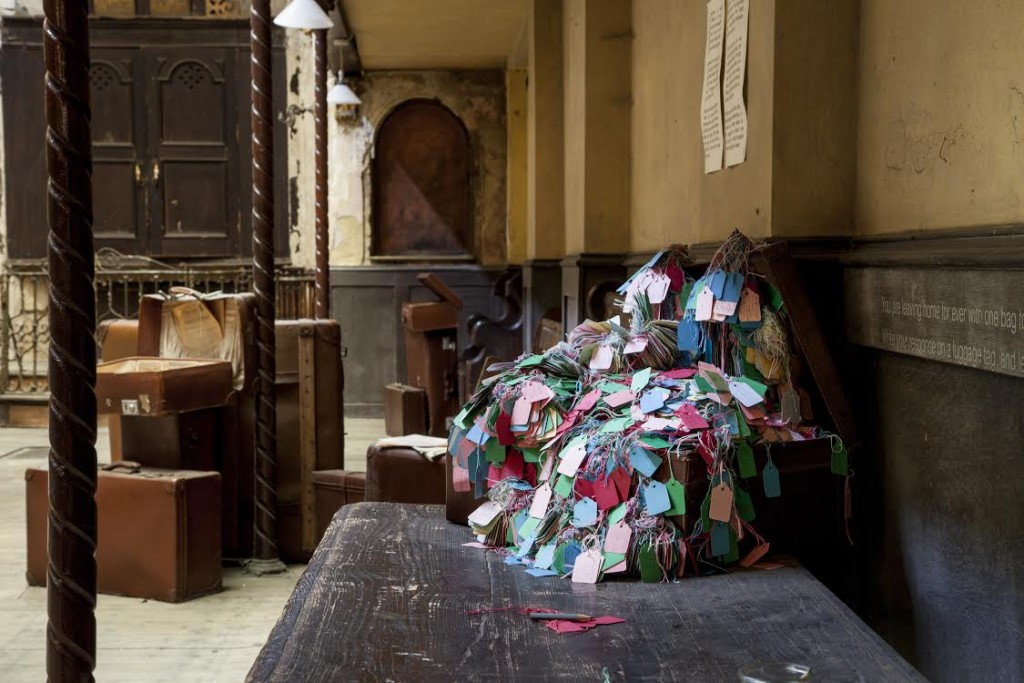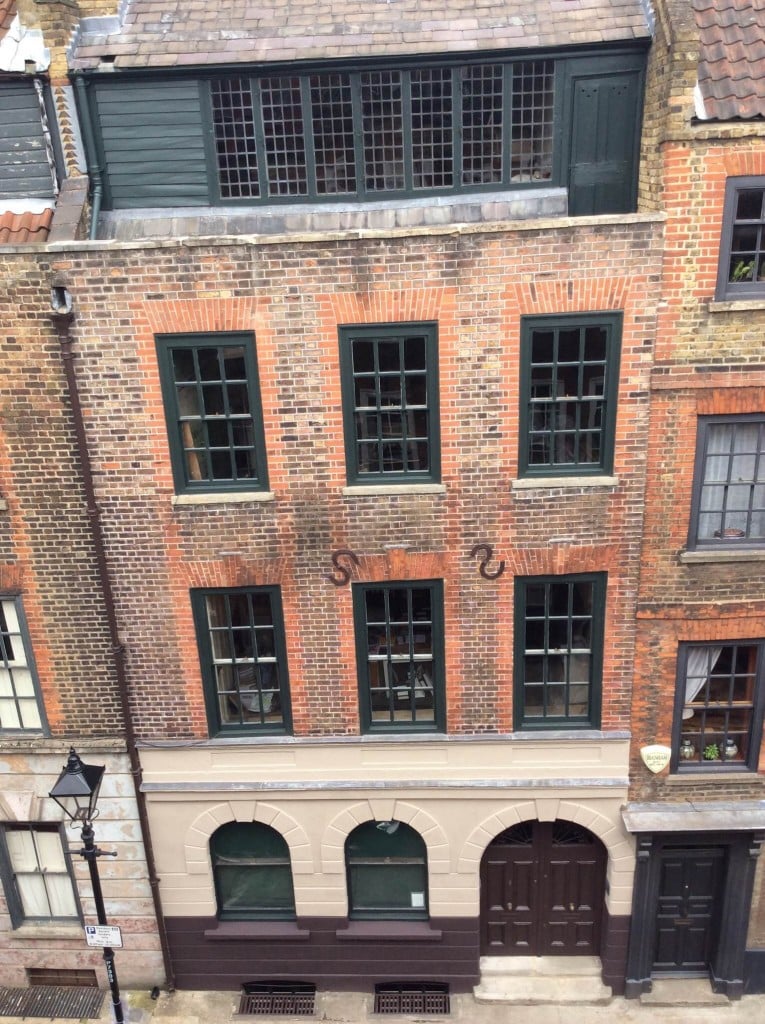Blog Archive
East End Story
Across the Atlantic, in the center of London, there’s another continuously diverse Eastside neighborhood. Spitalfields, Like the Lower East Side, began as fields outside the city and gradually bloomed into an urban home for French Protestants, and Eastern European Jewish, Caribbean and Bangladeshi immigrants. Today, street signs are in English and Bengali, shop windows display samosas and bagels (spelled beigels there), and low-rise buildings hint at an evolving neighborhood.

The entrance of 19 Princelet Street saw residents, workers, and worshippers through its hallway. Credit: Matthew Andrews/19 Princelet Street
At number 19 Princelet Street, right off the well-known Brick Lane, the front door opens to a quiet, darkened hallway, cool with the scent of stone floors. As my eyes adjusted to the light, I learned the beginnings of the building that now houses the Museum of Immigration and Diversity. Philip Black, volunteer and member of the museum’s advisory board, recounted how the building started as a home in 1719 for the Ogier family, Huguenots seeking religious refuge in England. It soon was divided up into living and work spaces; while silk weavers earned their wages in the attic workshop, Irish and Eastern European Jewish immigrants made homes in the apartments. In 1869, a Jewish congregation built a synagogue where the house’s back garden had been, and created a basement to include a meeting room for the congregation.
These details all sounded so familiar, so much like the stories we tell at the Tenement Museum of the Levine family with their garment workshop and the Schneiders with their basement meeting room.
The similarities extend to how the building became a museum: 19 Princelet Street sat uninhabited for the better part of the 20th century until 1981, when the Spitalfields Center Charity began to transform the building into a public space focused on immigration. They’ve worked on careful conservation over the decades, and while the building is a Grade II* structure—the second highest preservation designation in England – it remains too fragile to be open to the public regularly. Volunteers staff the museum on its open days, when groups from all over the world book visits to experience the building and hear its stories.
After crossing the physical threshold from 18th century home to 19th century synagogue, I descended a flight of foot-smoothed steps to the basement excavated below. In this former social area and meeting space, where community members met in the 1930s to organize political action against Fascism, I explored their permanent exhibit, Suitcases and Sanctuary.

In the building’s former synagogue, the exhibit Suitcases and Sanctuaries invites visitors to share what they would bring if they were immigrating. Credit: Ed Marshall/19 Princelet Street
Rather than a traditional museum exhibit of objects and documents, the museum chose to display artwork about migration, created by local school children. The classes had been asked to imagine themselves as earlier immigrants; the exhibit displayed their work performing Yiddish folk songs, writing letters from the perspective of Irish immigrants, and making collages about the dreams of the newly arrived. The students’ work also involved telling their own stories – I listened to a recording of a child from Somalia explaining why he/she left his/her country, and read students’ opinions on what they liked about the neighborhood of Spitalfields today.
When thinking about an iconic archway on Brick Lane, one girl mused, “It made me feel like people from Bangladesh were welcome in London.” This statement would have resonated on any day, but I happened to be visiting the Museum on June 23rd, the day of the British referendum vote to decide whether or not to leave the European Union. Reading about this student’s sense of belonging in London, in a basement where people used to meet to discuss whether they belonged, gave me a rising sense of hope, and an almost visceral reinforcement from the strength of an open and inclusive community.

The attic was added as a workshop for French Huguenot silk weavers in the 18th Century. Credit: Philip Black/19 Princelet Street.
Susie Symes, the Chair of Trustees for the Museum of Immigration and Diversity, shared with me the Museum’s commitment to welcoming all stories. Whether their volunteers host visitors from close by or far away, they invite every person to contribute part of their story to the exhibit. At 19 Princelet Street, the building itself is the prime exhibit and, like the Tenement Museum, it holds stories from residents and visitors alike.
Currently, Britain has no national museum dedicated to migration. Susie and I spoke about the need for more public spaces to engage with stories of how the country has been shaped by those who have moved there. One organization working towards this goal is The Migration Museum Project, which is based in London. they’ve been collecting and preserving immigration narratives in London and have been operating as a travelling museum, setting up exhibits throughout the city as they look for a permanent space to call home.
At the Tenement Museum, we seek to expand and explore what it means to be American, but this question of what it means to be British, and larger questions of identity and belonging, have never been more critical. My conversations in London gave me a renewed sense of connectedness to the Lower East Side, the neighborhood that helps me understand American identity.
- Post by Kathryn Lloyd, Education Manager for the Lower East Side Tenement Museum